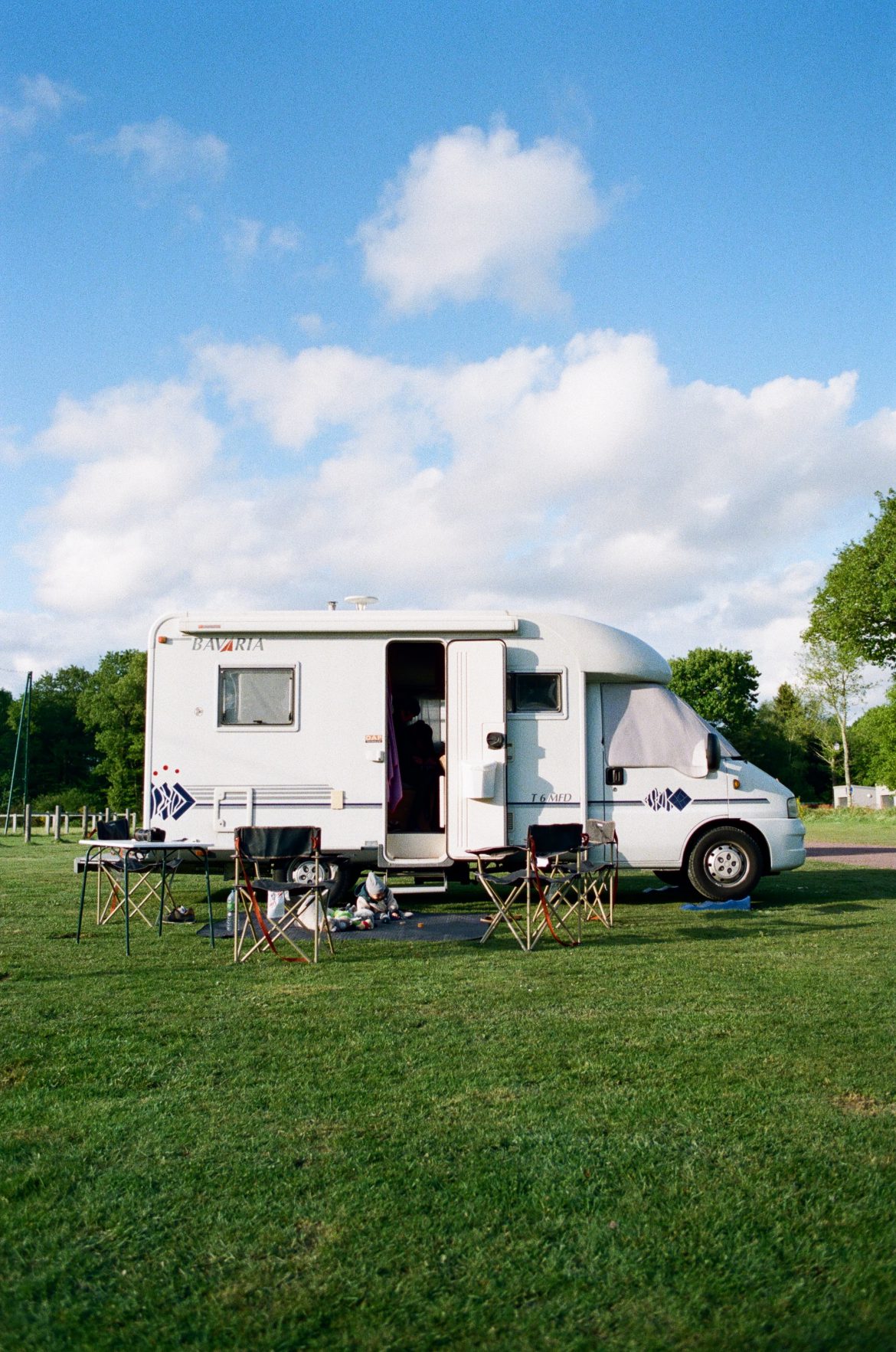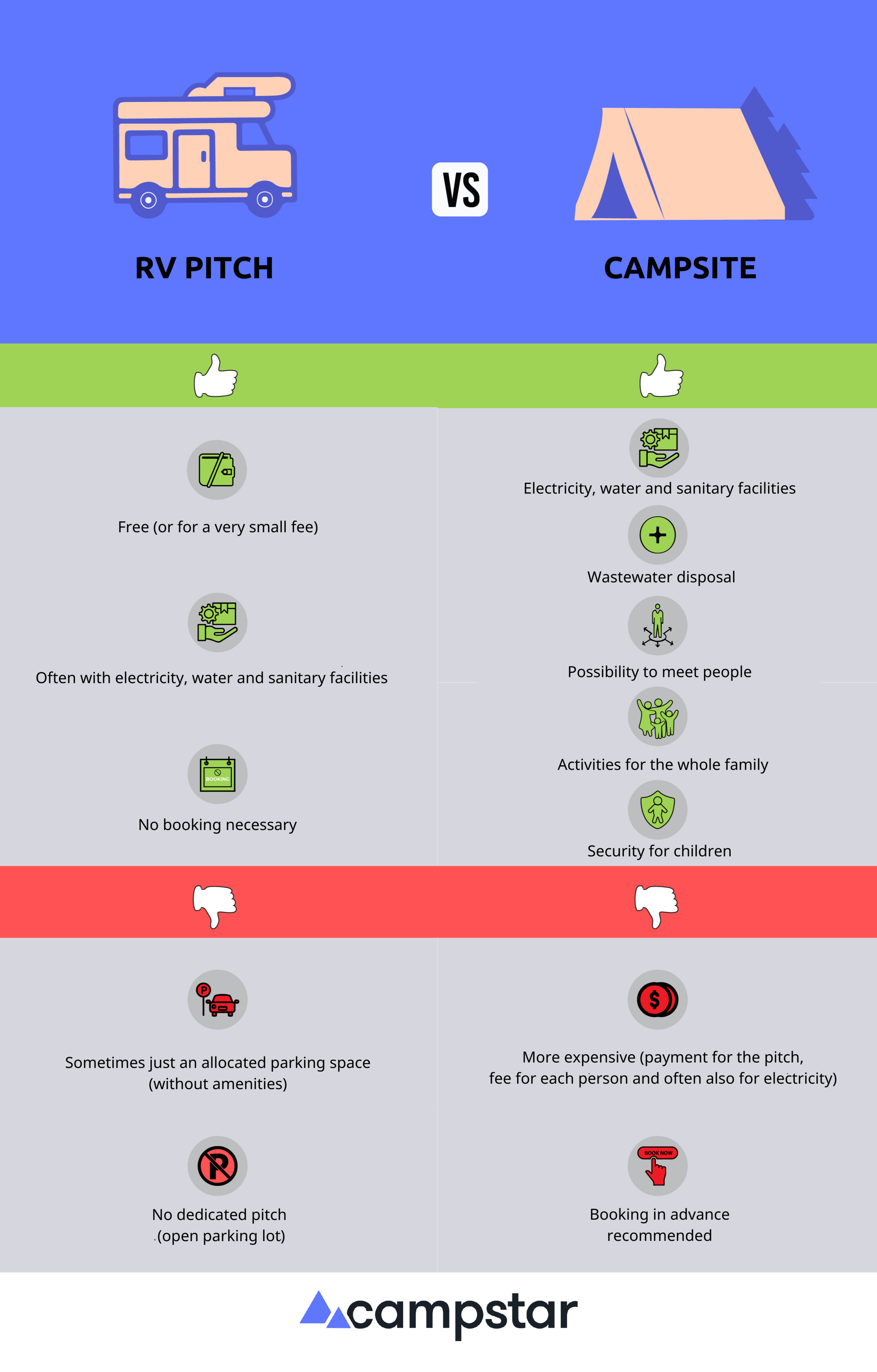There is hardly any other type of holiday where the options are as varied and customisable as when you go on holiday with a campervan. That’s why more and more people of all ages are opting for it. Buying a motorhome and renting a campervan are booming!
However, beginners in particular keep asking themselves the following questions: “Where do I stay overnight? Where do I stand during the day? Which places are most suitable for me?” We’ll help you get some clarity on this.
Different overnight accommodation options
The following options are generally available to you for overnight stays with your camper van:
Campsites
Everyone knows them, the campsites. They offer tents, caravans but also campervans a place to feel safe and comfortable day and night. There are huge differences, both in terms of price and facilities. You can choose from small, unspoilt campsites to luxury campsites with all the trimmings.
RV pitches
Unlike a campsite, a campervan site is usually only for motorhomes. The pitches are smaller. “Camping-like behaviour” is not tolerated everywhere.
Free standing
Sometimes this form is also called “wild camping”. You simply place yourself wherever you like. In Germany and many other European countries, wild camping is prohibited. However, according to the German Road Traffic Regulations (StVO), you are allowed to “establish your fitness to drive” wherever it is not expressly prohibited. The time limit is a maximum of 10 hours. This also includes a single overnight stay.
Alternative places
More and more often, winegrowers or farmers offer campers a place on their property. You are subliminally expected to eat or buy their products. The one-off overnight stay with a campervan on car parks belonging to restaurants is also becoming more and more popular. The prerequisite is that you stay there
However, the most common overnight accommodation options are at a campsite and at a RV pitch.
RV pitch versus campsite
You can’t make a blanket statement that one is better and the other worse. Both have their advantages and disadvantages. Each camper must decide for himself what he expects and what he can perhaps do without. Frequent travellers often use both.
Here is a brief list of the advantages and disadvantages of a RV pitch and a campsite in direct comparison.
However, you should know that there are more and more exceptions, especially in the case of RV pitches, with regard to additional offers, the need to book in advance and the space available.
 Advantages:
Advantages:
RV pitch
- Free of charge or only lower fees
- Charge per pitch, no matter how many people or animals are on board
- Access possible at any time
- Payment often regulated by vending machines (no waiting & rest periods)
- Supply and disposal at most sites (sometimes with additional costs)
- Often close to sights and/or even in the middle of cities
- Sometimes a baker comes to the site in the morning
- Can be used all year round
- Campers are among themselves; lots of contact opportunities
- Increasing offer
- No booking necessary
Campsite
- Supply and disposal often included in the price
- Contact person on site (at reception)
- Payment to staff
- Larger pitches, sufficient for table, chairs, awning & marquee
- Electricity connection (but often at additional cost)
- Good infrastructure (shop, sports & play areas, entertainment etc.)
- Usually washing machine & dryer
- Sanitary facilities included (for personal hygiene, washing up & laundry)
- Often close to nature
- Child/family friendly
- Often discount/insurance cover with camping cards from ADAC, ACSI etc.
Disadvantages
RV Pitch
- Often payment at vending machines; no uniform system; sometimes only possible with coins, sometimes only with card
- Little parking space, sometimes only one specially designated parking space; camping-like behaviour not permitted/possible
- Not always (sufficient) electricity available
- Rarely WC & shower
- No/hardly any child-friendly sites
- No contact person on site for problems
Campsite
- Higher price level
- Charge per pitch, per person, per dog; electricity extra
- Fixed opening hours at the reception
- Fixed times for arriving and leaving the site
- Often only open seasonally
- A few have no or difficult to reach supply & disposal stations
- Rest periods, during which, among other things, the vehicle may not be moved
- Booking in advance recommended
Other:
- The campsite is mostly frequented by single travellers or middle-aged to older people. Campsite users are often families with children.
- The number of available pitches is increasing – sometimes at the expense of campsites – because, among other things, campsites are being turned into pitches.
Conclusion
Those who are self-sufficient with their campervan and love their personal freedom in terms of spontaneity etc. tend to use a motorhome pitch. If you prefer to play it safe, book in advance and have a contact person, choose a campsite. The size of the pitch also plays an important role: anyone who travels with a campervan on pitches knows the problem of “cramped camping”…
City tours can be fantastically combined with pitches. Recreational holidays with the desire for a lot of space tend to go with campsites.
Families with children prefer campsites, whereas travellers in pairs (with dogs) often feel more comfortable on pitches.
The decision for one or the other accommodation option is individual and depends on the following factors:
- Campervan equipment
- Cost factor
- Expectations of aids, offers and equipment
- Space requirements

 Advantages:
Advantages: